Homemade sandwich bread brings the comforting aroma of freshly baked goodness into your kitchen. Among all the bread varieties you can create at home, this one shines for its simplicity, versatility, and irresistibly delicious results. Whether crafting a hearty grilled cheese or a timeless PB&J, this recipe guarantees soft, fluffy slices that are perfect for all your sandwich-making adventures.
Introduction
Imagine biting into a sandwich made with soft and flavorful bread that elevates every ingredient between the slices. That’s the magic of homemade sandwich bread! Although bread from the supermarket may seem convenient at times, it usually doesn’t have the warmth and personal touch of bread made at home. With a few simple ingredients and determination, you can bake an excellent loaf that’s delicious and free of unnecessary ingredients and preservatives. If you’re an experienced baker or new to baking, this guide will take you through all the information you need to know about creating an ideal loaf.
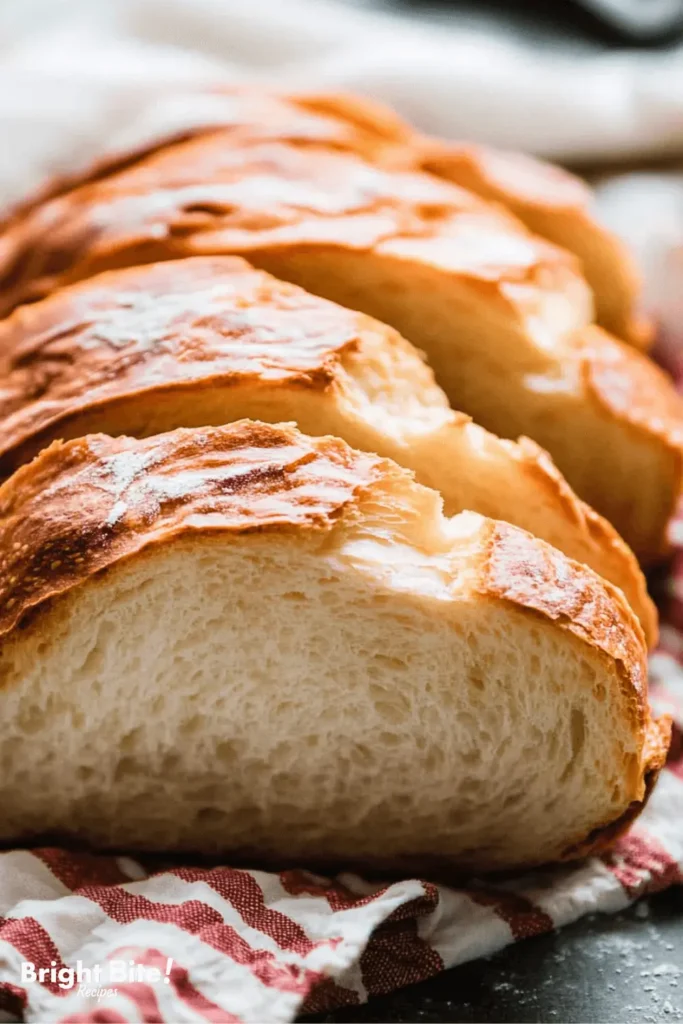
Table of Contents
Why You’ll Love This Recipe
Homemade sandwich bread is more than just a recipe; it’s an experience. Here are some of the reasons you’ll fall in love with making it:
- Easy to Make: With straightforward steps and accessible ingredients, this recipe is ideal for bakers of all skill levels.
- Customizable: Add herbs, seeds, or sweetness to suit your preferences.
- Healthier: Skip the additives and preservatives found in many store-bought loaves.
- Perfect Texture: Achieve that soft, fluffy crumb perfect for sandwiches, toast, or even French toast.
Detailed Ingredients and Instructions
Here’s what you’ll need to get started on your homemade sandwich bread:
Ingredients:
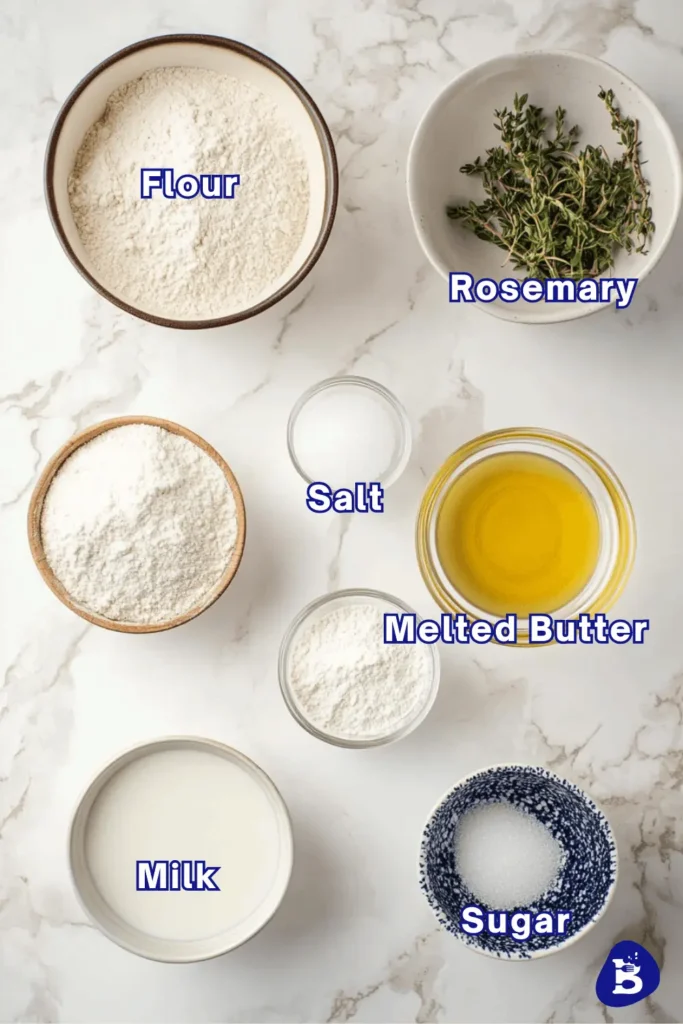
- 3 cups all-purpose flour
- 1 tablespoon sugar
- 1 teaspoon salt
- 1 packet (2 1/4 teaspoons) active dry yeast
- 1 cup warm water (approximately 110°F)
- 2 tablespoons unsalted butter, melted
- 1/4 cup milk
Instructions:
- Activate the Yeast:
- Combine the warm water and sugar in a small bowl. Sprinkle the yeast on top and let it sit for 5-10 minutes until it becomes frothy.
- Mix the Dry Ingredients:
- In a large mixing bowl, whisk together the flour and salt. Create a well in the centre.
- Combine Wet and Dry:
- Pour the frothy yeast mixture, melted butter, and milk into the well. Mix until a shaggy dough forms.
- Knead the Dough:
- Turn the dough onto a lightly floured surface and knead for about 8-10 minutes or until the dough is smooth and elastic.
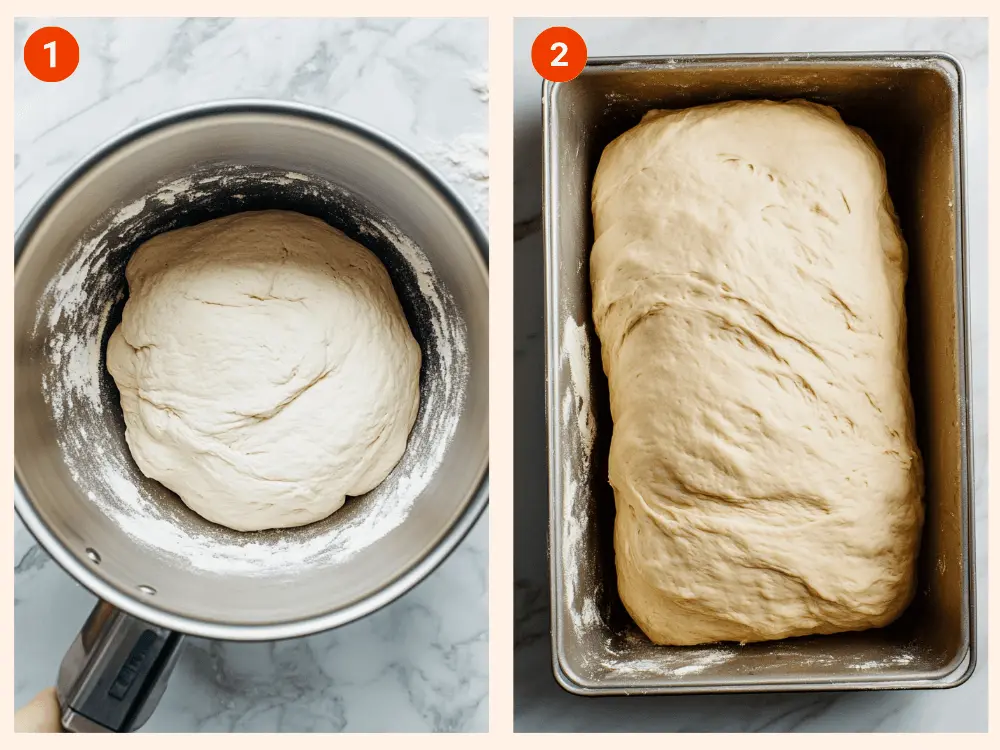
- First Rise:
- Place the dough in a lightly greased bowl, cover with a damp cloth, and let it rise in a warm place for about 1 hour or until it doubles in size.
- Shape the Dough:
- Punch down the dough to release any air bubbles. Shape it into a loaf and place it in a greased 9×5-inch loaf pan.
- Second Rise:
- Cover the pan with a damp cloth and let the dough rise again for about 30-45 minutes or until it reaches the edge of the pan.
- Bake:
- Preheat your oven to 375°F (190°C). Bake the bread for 25-30 minutes, until the top is golden brown and the loaf sounds hollow when tapped.
- Cool:
- Remove the bread from the pan and let it cool completely on a wire rack before slicing.
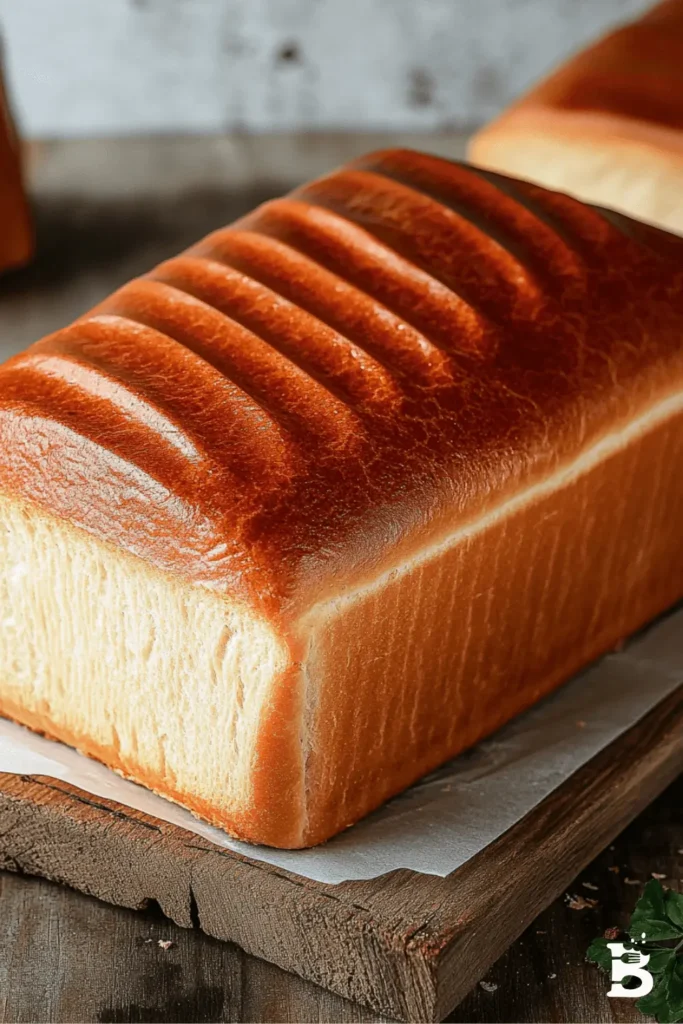
Tips, Variations, and Storage Options
Making homemade sandwich bread is a rewarding experience, but there are ways to ensure your success and customize the recipe to suit your tastes. Here are some tips, variations, and storage ideas to help you get the most out of this recipe.
Tips for Success:
- Measure Ingredients Accurately: Use a kitchen scale for precise measurements, especially for flour. Too much flour can make the bread dense.
- Check Your Yeast: If your yeast doesn’t foam during activation, it may be expired. Use fresh yeast for the best results.
- Knead well: Proper kneading develops gluten, which gives the bread its structure and soft texture. Aim for a dough that is smooth and elastic.
- Control Rising Times: Dough rises best in a warm, draft-free environment. If your kitchen is cold, place the dough in a slightly warm (but off) oven with a bowl of hot water nearby.
Variations:
- Whole Wheat Version: Substitute half of the all-purpose flour with whole wheat flour for a nuttier flavour and denser texture.
- Herbed Bread: Add 1-2 teaspoons of dried herbs like rosemary, thyme, or oregano to the flour for a savoury twist.
- Seeded Top: Before baking, brush the loaf with an egg wash and sprinkle sesame seeds, poppy seeds, or flaxseeds on top for added crunch.
- Sweeter Bread: Increase the sugar to 2 tablespoons and add a teaspoon of vanilla extract for a slightly sweeter loaf.
- Dairy-Free Option: Swap the milk for a plant-based alternative like almond or oat milk and use vegan butter or oil instead of regular butter.
Storage Options:
- At Room Temperature: Wrap the bread in plastic wrap or store it in an airtight container. It will stay fresh for up to 3 days.
- Refrigeration: Refrigerating bread can dry it out, so avoid this option unless necessary. If refrigerated, toast slices to revive softness.
- Freezing: Slice the bread and freeze it in a zip-top bag for up to 3 months. Defrost slices at room temperature or pop them directly into the toaster.
Equipment Needed to make homemade sandwich bread
For this homemade sandwich bread recipe to be made, it’s only some essential equipment. These tools will ensure that the loaf is perfectly cooked and allow you to make an excellent loaf:
- Mixing Bowls: A set of large and medium-sized bowls for mixing and rising.
- Measuring Cups and Spoons: Essential for accurate ingredient measurements.
- Dough Scraper: Handy for kneading and shaping the dough.
- 9×5-inch Loaf Pan: The perfect size for a standard sandwich bread loaf.
- Wire Rack: Allows the bread to cool evenly, preventing sogginess.
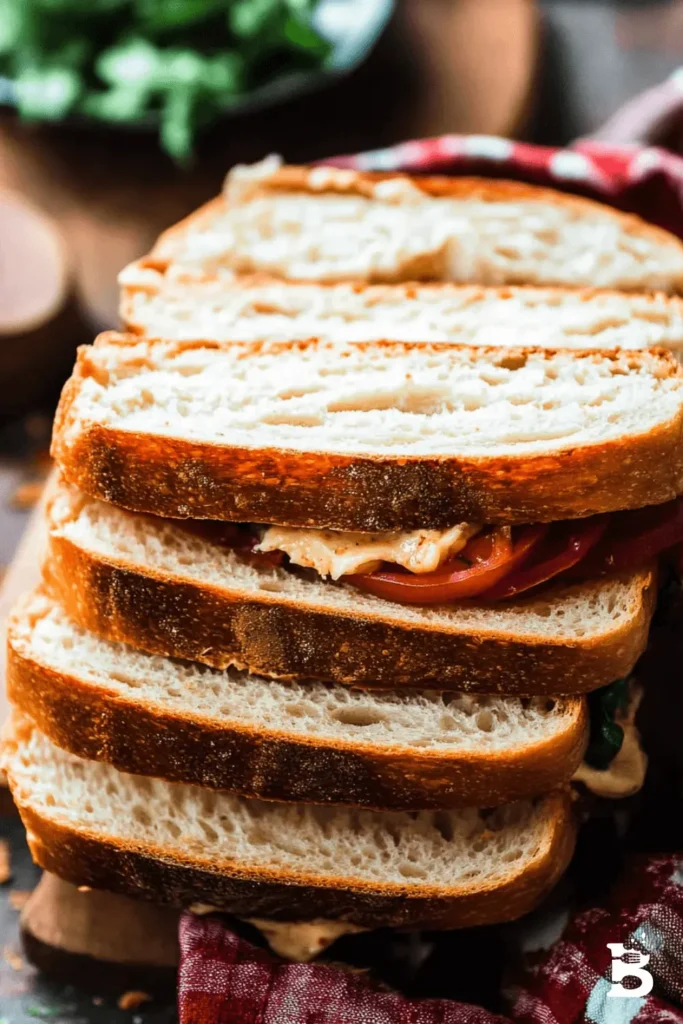
Related Recipes
If you love making homemade sandwich bread, you’ll likely enjoy these related recipes as well:
- Classic Dinner Rolls: Soft, buttery rolls perfect for any meal.
- Herb and Garlic Focaccia: A rustic Italian bread with a crispy exterior and fluffy interior, topped with herbs and olive oil.
- Whole Wheat Bread: A heartier, more nutritious option for everyday use.
- Sweet Milk Bread: Light and slightly sweet, ideal for breakfast or snacks.
- No-Knead Artisan Bread: A quick and easy option for those who prefer a rustic crusty loaf.
Pairing/Serving Suggestions
Homemade sandwich bread is incredibly versatile and pairs well with various dishes. Here are some ideas to inspire your next meal:
- For breakfast, toast slices and top them with avocado, scrambled eggs, or a slather of homemade jam.
- Lunch: Use it for classic sandwiches like turkey and cheese, BLTs, or grilled cheese.
- Dinner: Serve alongside hearty soups, stews, or as a base for garlic bread.
- Dessert: Transform it into a decadent bread pudding or French toast for a sweet treat.
- Drinks: Pair it with a frothy latte in the morning or a comforting cup of tea in the afternoon.
Frequently Asked Questions
Baking homemade sandwich bread can raise a few questions, especially for beginners. Here are answers to some of the most common inquiries:
Can I Use Instant Yeast Instead of Active Dry Yeast?
Yes, instant yeast can be used in place of active dry yeast. The main difference is that instant yeast doesn’t require activation in water. Simply mix it directly with the dry ingredients and proceed with the recipe as instructed.
What If My Dough Isn’t Rising?
If your dough doesn’t rise, it could be due to one of the following reasons:
- The yeast is expired or inactive.
- The water used for activation was too hot or too cold.
- The dough is in a cold environment. Move it to a warm, draft-free spot to encourage rising.
How Do I Know When the Bread Is Fully Baked?
A fully baked loaf will sound hollow when tapped on the bottom. You can also use a kitchen thermometer to check the internal temperature, around 190°F (88°C).
Can I Double the homemade sandwich bread Recipe?
Absolutely! Simply double the ingredients and divide the dough between two loaf pans. Make sure your oven can accommodate both pans evenly.
Why Is My Bread Dense?
Dense bread is often the result of insufficient kneading, too much flour, or not allowing the dough to rise fully. Pay close attention to these steps to achieve a soft, fluffy loaf.
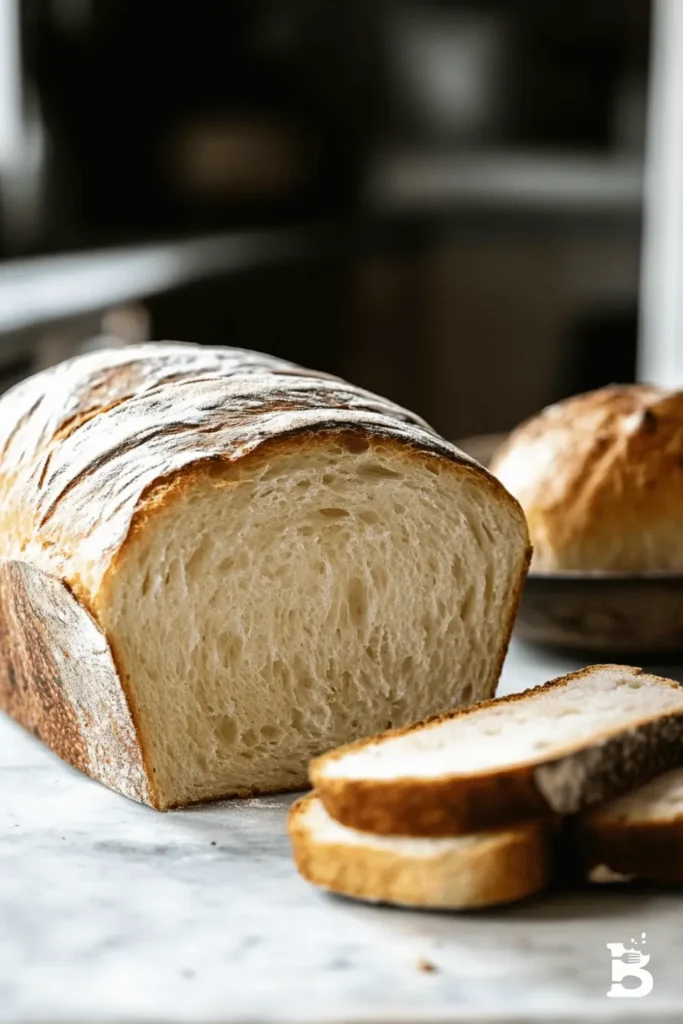
Nutrition Information
Homemade sandwich bread tastes better than store-bought varieties and gives you control over the ingredients. Here’s a breakdown of the nutritional content for one slice (based on a standard 12-slice loaf):
- Calories: 120
- Protein: 3g
- Carbohydrates: 22g
- Fats: 2g
- Fiber: 1g
- Sugar: 1g
- Sodium: 150mg
These values may vary depending on any modifications or additions you make to the homemade sandwich bread recipe.
Seasonal and Occasion Variations
One of the best things about home-cooked sandwich bread is its ability to adapt to various times of the year and occasions. Here are some innovative ways to personalize your loaf:
Spring:
Incorporate fresh herbs like dill or chives for a bright, seasonal flavour. Pair it with light salads and soups for a refreshing meal.
Summer:
Add sun-dried tomatoes or roasted red peppers to the dough for a Mediterranean-inspired twist. It’s perfect for picnics and barbecue sandwiches.
Fall:
Mix warm spices like cinnamon, nutmeg, and a touch of pumpkin puree for an autumnal loaf that pairs beautifully with apple butter.
Winter:
Enrich the dough with molasses and sprinkle the top with oats for a hearty, comforting bread ideal for pairing with stews and hot cocoa.
Holidays:
Shape the dough into festive forms, such as braids or wreaths, and sprinkle with sesame or poppy seeds for a centrepiece-worthy presentation.
My Recipe Tips
To help you achieve the best results with your homemade sandwich bread, here are some expert tips and tricks:
- Temperature Matters: Ensure your water is warm but not too hot (around 110°F) to activate the yeast without killing it.
- Don’t Overproof: Letting the dough rise too much can cause it to collapse during baking. Stick to the recommended rising times.
- Use Steam for a Softer Crust: Place a small pan of hot water in the oven while baking to create steam, which keeps the crust soft and tender.
- Cool Completely Before Slicing: Cut into a warm loaf is tempting, but waiting until it cools ensures cleaner slices and preserves the texture.
Common Bread-Baking Issues
Even the most experienced bakers encounter challenges. Here’s how to tackle common problems when making homemade sandwich bread.
Why Is My Dough Sticky?
Sticky dough often means there’s too much moisture or not enough kneading. Add flour gradually while kneading until the dough is smooth and elastic. Avoid overloading the dough with flour, as this can result in a dense loaf.
My Bread Didn’t Rise—What Went Wrong?
If your bread doesn’t rise, check the following:
- Yeast Freshness: Expired or inactive yeast won’t ferment properly.
- Temperature: Cold environments can slow down yeast activity. Keep your dough in a warm, draft-free space.
- Liquid Temperature: Liquids that are too hot or cold can affect the yeast.
Why Is My Bread Dry or Crumbly?
Dry bread may result from overbaking or too much flour. Check your oven temperature with a thermometer to ensure accuracy, and use precise measurements for ingredients.
How Can I Make My Crust Softer?
If you prefer a softer crust, cover the bread with a clean kitchen towel as it cools. The trapped steam will soften the exterior.
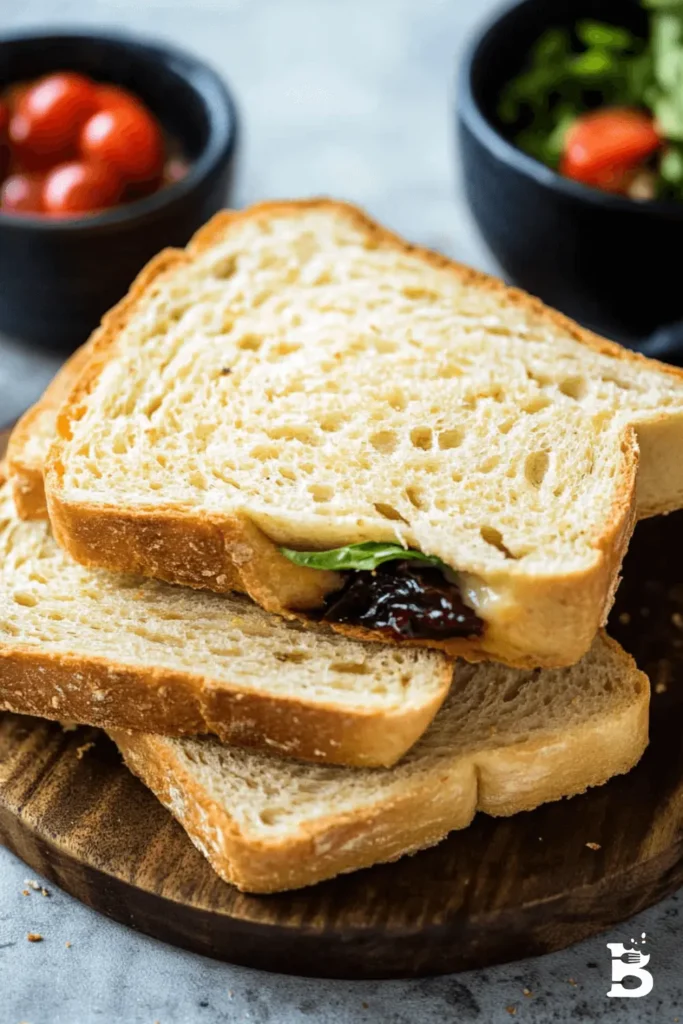
Conclusion
Making your sandwich bread can be an enjoyable experience that blends the simplicity of bread with creativity and incredible flavour. Mixing the elements until the first slice is warm, each step is awe-inspiring with excitement and satisfaction. Unlike store-bought options, this recipe gives you complete control over the texture, taste, and quality of your bread, making it a healthier and more delicious choice for your family.
Whether you’re a beginner looking for an easy recipe or an experienced baker experimenting with variations, homemade sandwich bread is a versatile addition to your repertoire. The possibility of customization means modifying the recipe to suit every occasion and season. Once you’ve got this recipe down, you’ll be wondering why you ever rely on store-bought bread in the first place.
Now that you’ve learned everything about homemade sandwich bread, it’s time to roll up your sleeves and start baking. Let the irresistible aroma of fresh bread fill your kitchen, and enjoy the satisfaction of crafting something truly special from scratch.
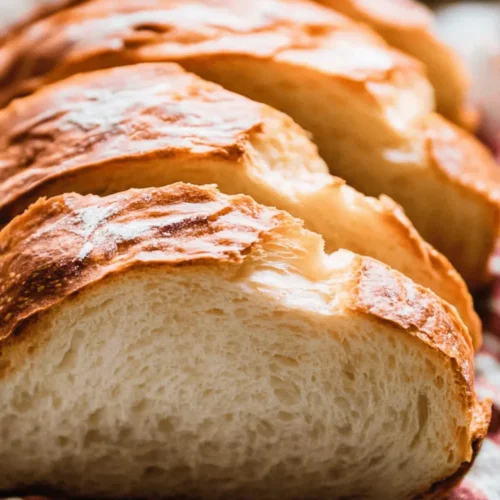
🍞 Homemade Sandwich Bread 🥪✨
Ingredients
- 3 1/2 cups all-purpose flour or bread flour
- 2 1/4 teaspoons active dry yeast 1 packet
- 1 1/4 cups warm water 110°F/45°C
- 2 tablespoons granulated sugar
- 2 tablespoons unsalted butter melted
- 1 teaspoon salt
Instructions
- Activate the Yeast:
- In a small bowl, combine warm water and sugar. Sprinkle the yeast on top and let it sit for 5-10 minutes, until it becomes frothy.
- Mix the Dough:
- In a large mixing bowl, combine the flour and salt. Add the frothy yeast mixture and melted butter. Mix until a shaggy dough forms.
- Knead the Dough:
- Turn the dough onto a floured surface and knead for 8-10 minutes until it becomes smooth and elastic. Alternatively, use a stand mixer with a dough hook and knead for 5-7 minutes.
- First Rise:
- Place the dough in a lightly greased bowl, cover with a clean kitchen towel or plastic wrap, and let it rise in a warm place for about 1 hour, or until it doubles in size.
- Shape the Dough:
- Punch down the dough to release air bubbles. Turn it out onto a floured surface and shape it into a loaf. Place the dough into a greased 9×5-inch loaf pan.
- Second Rise:
- Cover the loaf pan with a towel and let the dough rise again in a warm place for 30-40 minutes, or until it rises slightly above the edge of the pan.
- Bake the Bread:
- Preheat your oven to 375°F (190°C). Bake the bread for 25-30 minutes, or until the top is golden brown and the bread sounds hollow when tapped.
- Cool and Serve:
- Remove the bread from the oven and let it cool in the pan for 10 minutes. Transfer it to a wire rack to cool completely before slicing.
